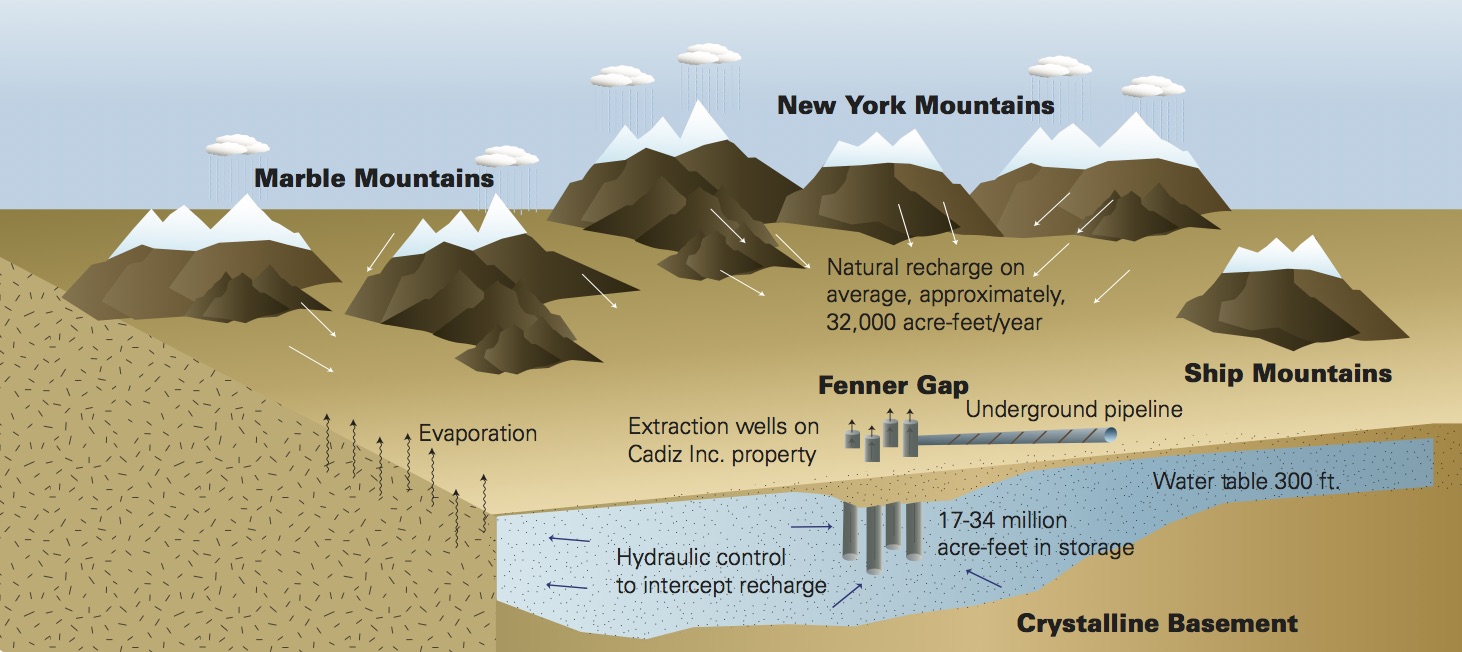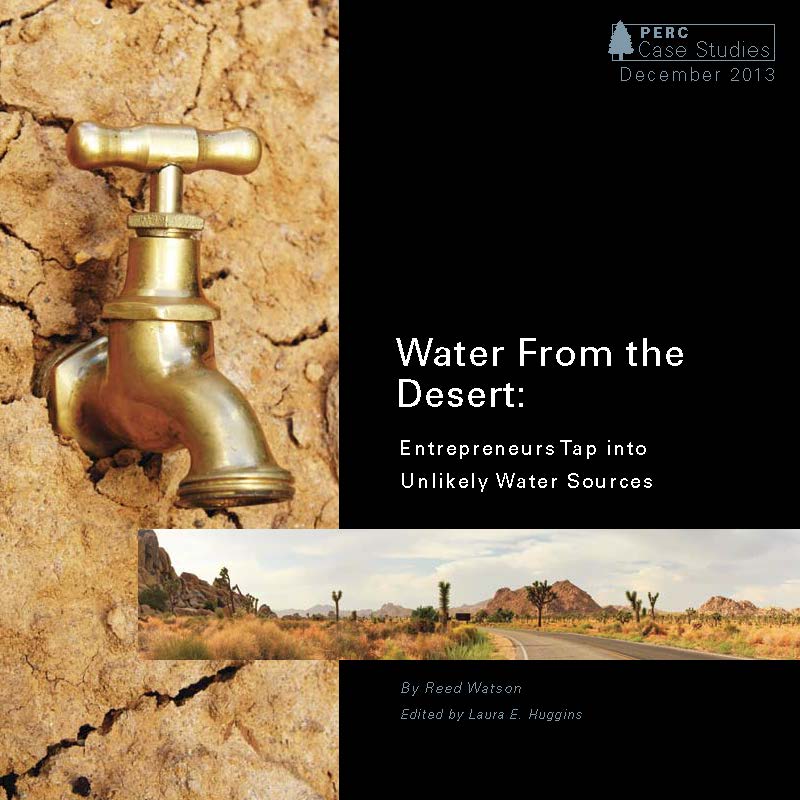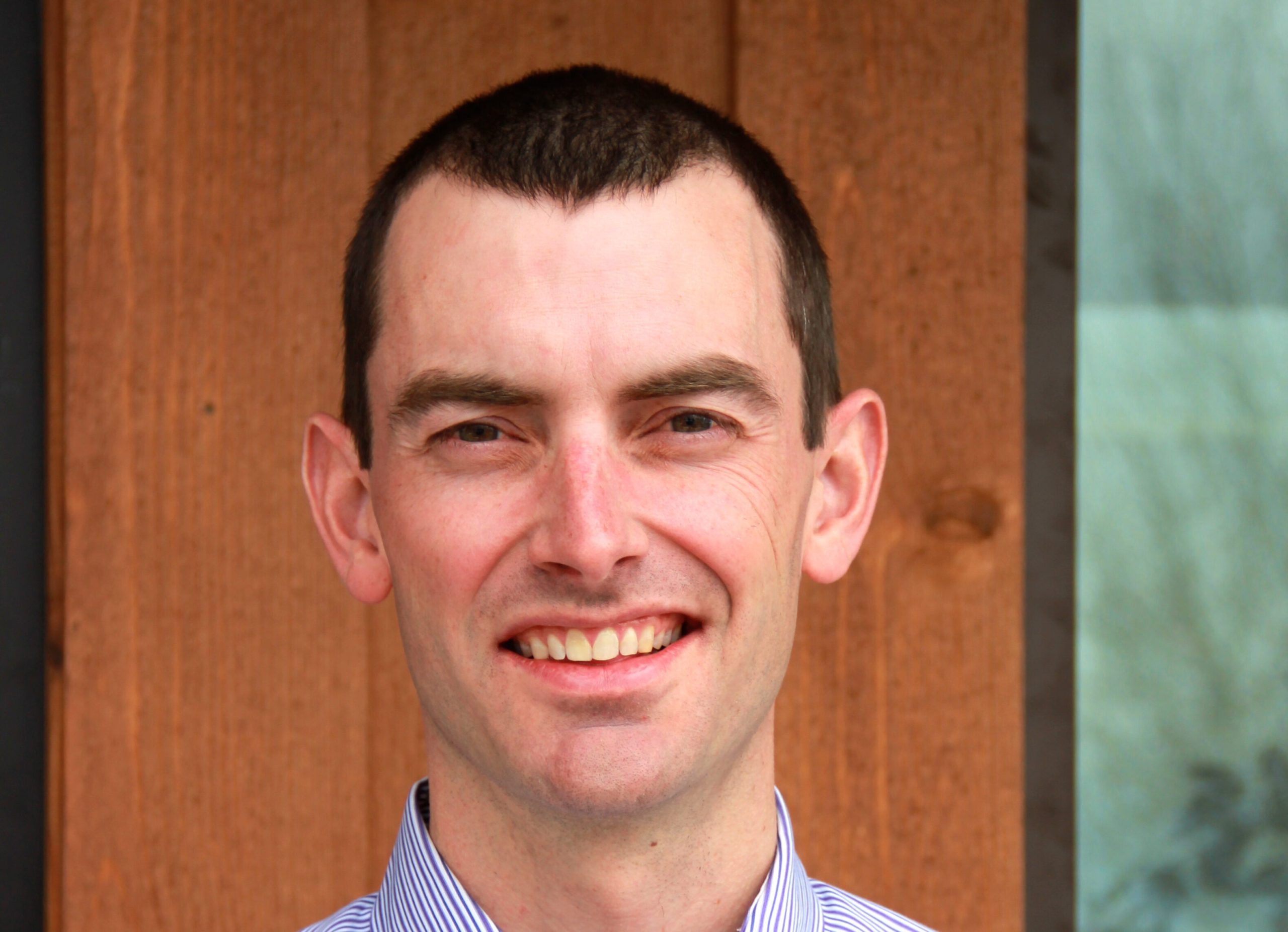Water is a scarce and contentious resource in California. Its allocation frequently breeds conflicts over endangered species, land use, and public health. Unfortunately, the state’s water laws and bureaucracies often encourage fighting between competing water users. Water markets offer a way to resolve such conflicts without harming the environment or infringing on the rights of others. As the Cadiz Valley Water Conservation, Recovery, and Storage Project demonstrates, water markets also motivate entrepreneurs to develop new water sources and deliver the scarce resource to the places that need it most.
With less than a foot of rainfall each year, the Mojave Desert is not an obvious place to look for water. An innovative proposal to pump groundwater from the Mojave and move it to nearby Southern California municipalities could change that perception.
The proposal comes from Cadiz Inc., a publicly traded company that owns forty-five thousand acres of Mojave Desert land overlying a large aquifer at the base of two watersheds. The Cadiz Valley Water Conservation, Recovery, and Storage Project—now Cadiz Inc.—would capture groundwater flowing from the watersheds before it filters through the aquifer and is lost to evaporation and salt contamination at nearby dry lakes. Cadiz hopes to capture this otherwise unused water and pipe it to the Colorado River Aqueduct, a direct conduit to the rapidly growing and thirsty municipalities of Southern California.
The Cadiz project has plenty of supporters, most notably Southern California water utilities looking to bolster their supplies and facilitate growth. The company also has several opponents who are using the political process to delay and potentially kill the project altogether. Whether the Cadiz project overcomes these political obstacles or not, the idea exemplifies the sort of entrepreneurial vision that is necessary to maximize the value of California’s scarce water resources.
A THIRSTY REGION
Water scarcity has long been a fact of life in Southern California. So too has population growth. The region’s current population of 24 million is expected to reach 40 million by 2050.
Responding to this scarcity, politicians and entrepreneurs have devised ways to import water from areas of relative abundance to Southern California’s thirsty and growing municipalities. Central to this process is the Metropolitan Water District of Southern California (MWD), the primary water utility in Southern California and the largest supplier of treated water in the United States.
The water district was created in 1928 to build and operate the Colorado River Aqueduct, a 242-mile pumping and conveyance system that draws water from Lake Havasu on the California–Arizona border. Later, in the 1960s, MWD also began importing water from northern California’s Sacramento-San Joaquin Delta via the State Water Project.
These imports make up the vast majority of MWD’s water portfolio, but the prospects of Southern California drawing additional water from either the Delta or the Colorado River are extremely limited. Both sources are currently over allocated, and future demand is only expected to increase. The U.S. Bureau of Reclamation predicts that the 40 million people currently drawing water from the Colorado River will increase to 76.5 million by the year 2060, leading to an average annual shortfall of 3.2 million acre-feet. Likewise, the State Water Project, which was originally built to serve a population of 16 million people, now serves more than 25 million Californians and irrigates more than 750,000 acres of agricultural land.
As a result of this oversubscription, both the Colorado River and the Delta are the subjects of long-standing water wars. In the case of the Colorado River, the primary issue is the allocation of water between seven western states through which the river and its tributaries flow. In the case of the Delta, the tension concerns environmental impacts, particularly endangered species such as the Delta smelt.
Given the shortage of water in Southern California and the unlikelihood of increasing imports from other areas, new and currently untapped sources are necessary to maintain the region’s economic productivity. The problem is that such sources are few and far between.
TAPPING INTO THE DESERT
The Cadiz group has found such a source in the unlikeliest of places: the Mojave Desert. Underlying its property just south of the Marble Mountains in San Bernardino County is a vast aquifer of native and renewable groundwater. Much of this groundwater is lost to evaporation and saltwater contamination. Cadiz hopes to recover this valuable resource and put it to a beneficial use, namely, pumping it to municipalities in Southern California.
The proposed project has two phases. The first entails constructing a well field to capture the groundwater and an underground pipe to convey it to the Colorado River Aqueduct. From there, the water would be pumped to partnering water utilities to the west. Cadiz estimates that it can extract roughly 50,000 acre-feet per year without damaging the aquifer or causing harm to other water users in the region, a finding confirmed by the project’s environmental impact report.
The second phase of the proposed project involves using the underground aquifer to store excess and unused native groundwater during wet years and to potentially store imported water from the Colorado River or State Water Project, if extra water becomes available. The aquifer has an estimated storage capacity of more than 1 million acre-feet. Utilizing even a fraction of this capacity would create much needed security for Southern California water users during prolonged drought.
UNSUBSTANTIATED OBJECTIONS
Despite the fact that Cadiz would create a reliable water supply from groundwater that otherwise evaporates or becomes contaminated, and that it would add much needed storage capacity to mitigate the effects of drought, the project has been hamstrung by lawsuits and regulatory reviews. Specifically, critics allege that the project will threaten local mining operations, that the groundwater is potentially contaminated, and that conveying the groundwater out of the basin will negatively impact the Mojave Desert ecosystem.
Scott Slater, CEO of Cadiz, publicly responded to these claims by explaining that the “project will not eliminate brine at the dry lakes and mining will continue after the project becomes operational.” He also notes that “if there are signs of any harm, the county has the authority to intervene and reduce or stop pumping.”
According to the environmental impact report conducted pursuant to the California Environmental Quality Act, the alleged impacts on wildlife are unlikely given the tenuous—if nonexistent—connection between the targeted groundwater and the surface water used by local wildlife populations. Regarding contaminants, Cadiz plans to treat the water, which would actually dilute the contaminants currently found in the Colorado River Aqueduct.
POLITICS AT PLAY
Another source of opposition comes from politicians who view the Cadiz project—and others like it—as a threat to centralized water management authority. Southern California water utilities are currently considering a plan to rebuild the State Water Project, and the development of local and less expensive alternative supplies undermines the need for such investments. Politicians from northern California know this, and they’ve come out in force against Cadiz.
Consider the contradictory statements of Senator Dianne Feinstein, who claims in the Sacramento Bee that water storage is an absolute necessity, “The message is clear: We must do more to prepare for increasingly harmful dry years by capturing more water in wet years. In short, California needs a lot more water storage and we need it now.” Meanwhile, Feinstein asks in the Los Angeles Times, “why proceed with Cadiz when it isn’t necessary and when it may very well result in serious adverse impacts to California’s pristine desert?”
According to Feinstein, water storage is the exclusive province of government. “There is still a lot of work to be done, particularly in the area of water storage. I will continue to urge the Bureau of Reclamation and the state to move as fast as possible to approve plans and funding to allow us to bank more water in wet years for the increasingly dry ones.” Indeed, this is not the first time politics have threatened to derail the Cadiz project. In 2001, the company had nearly reached an agreement with the Metropolitan Water District when pressure from Senator Feinstein killed the deal. Fifteen years later, she still opposes the project and is leveraging her political strength to stop it. Today, while the Cadiz project remains hampered by litigation and political opposition, it is moving forward after opponents have lost a handful of legal challenges in recent years, including one in a California Court of Appeals in May 2016.
PRICES, NOT POLITICS, SHOULD DECIDE
The Cadiz project has the potential to capture otherwise wasted water and send it to Southern California municipalities who are desperately in need of more reliable water supplies. It could also create much needed storage capacity to respond to climatic variability. But the preference of politicians for a centrally managed, infrastructure intensive stopgap to Southern California’s water scarcity could halt this entrepreneurial water development and storage project. The fate of the Cadiz project should depend on economic and environmental considerations, not back-alley politics and favoritism.
Read the case study online (PDF).
Learn more: live-perc-wp.pantheonsite.io/watermarkets







